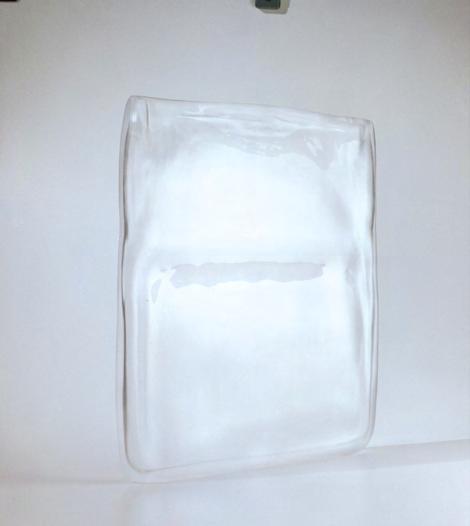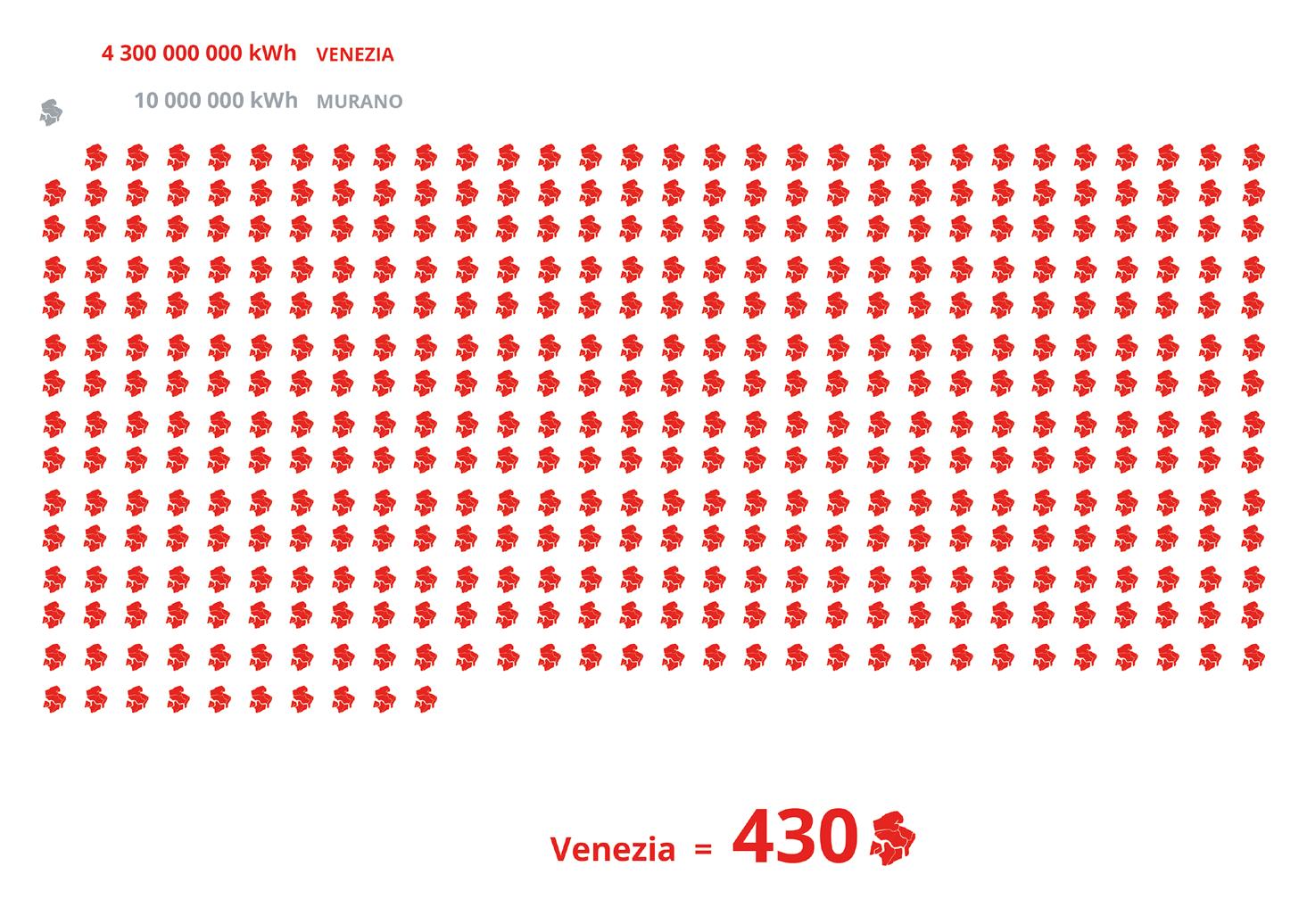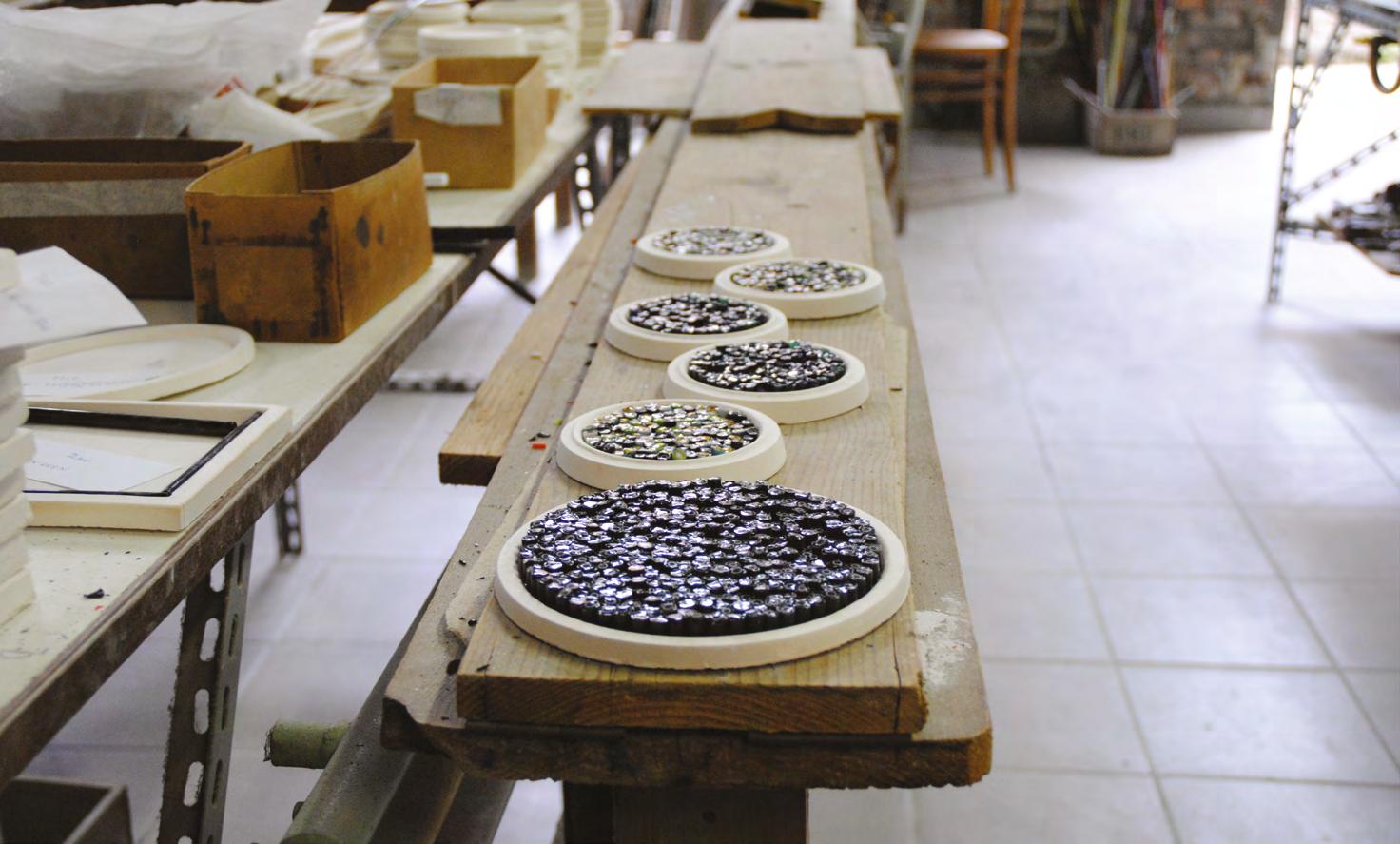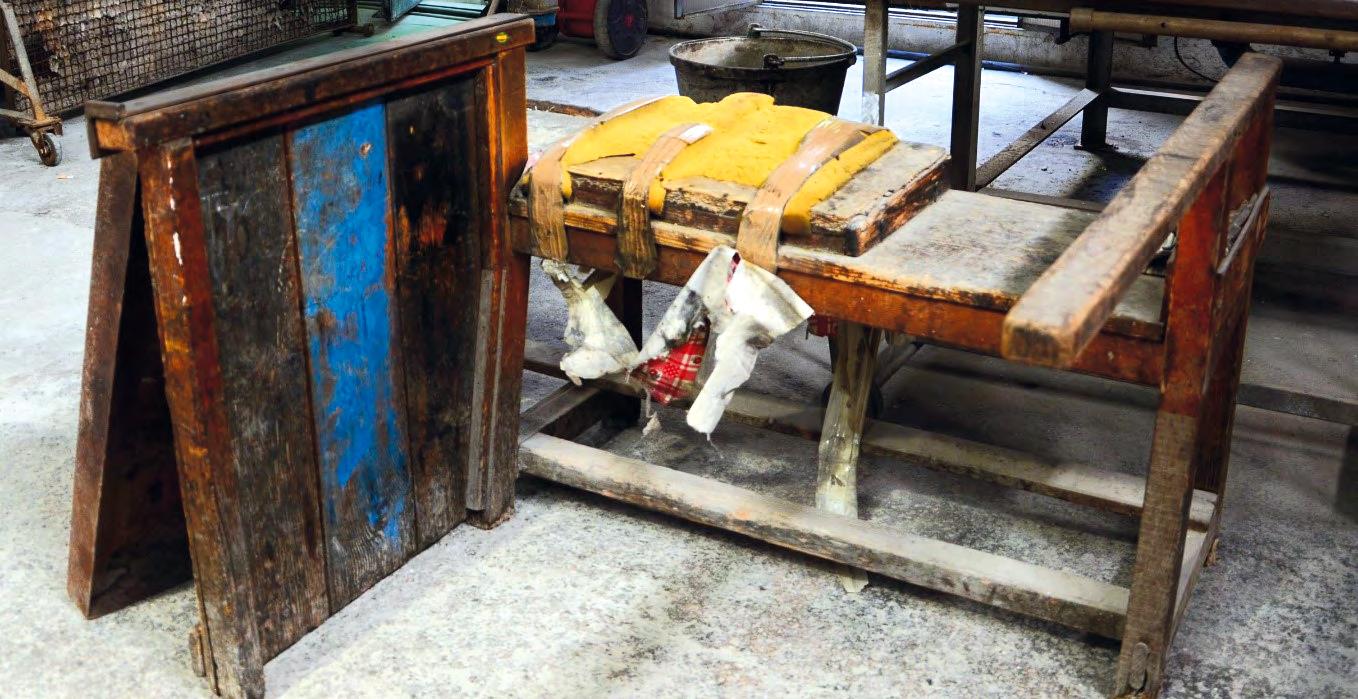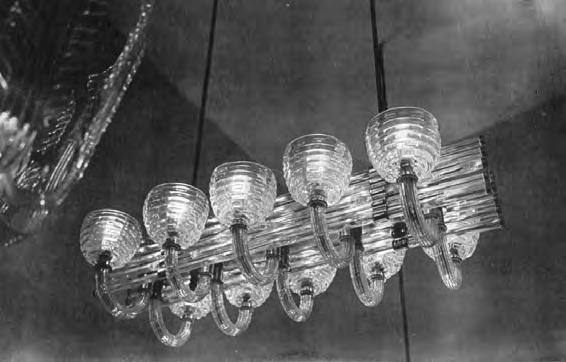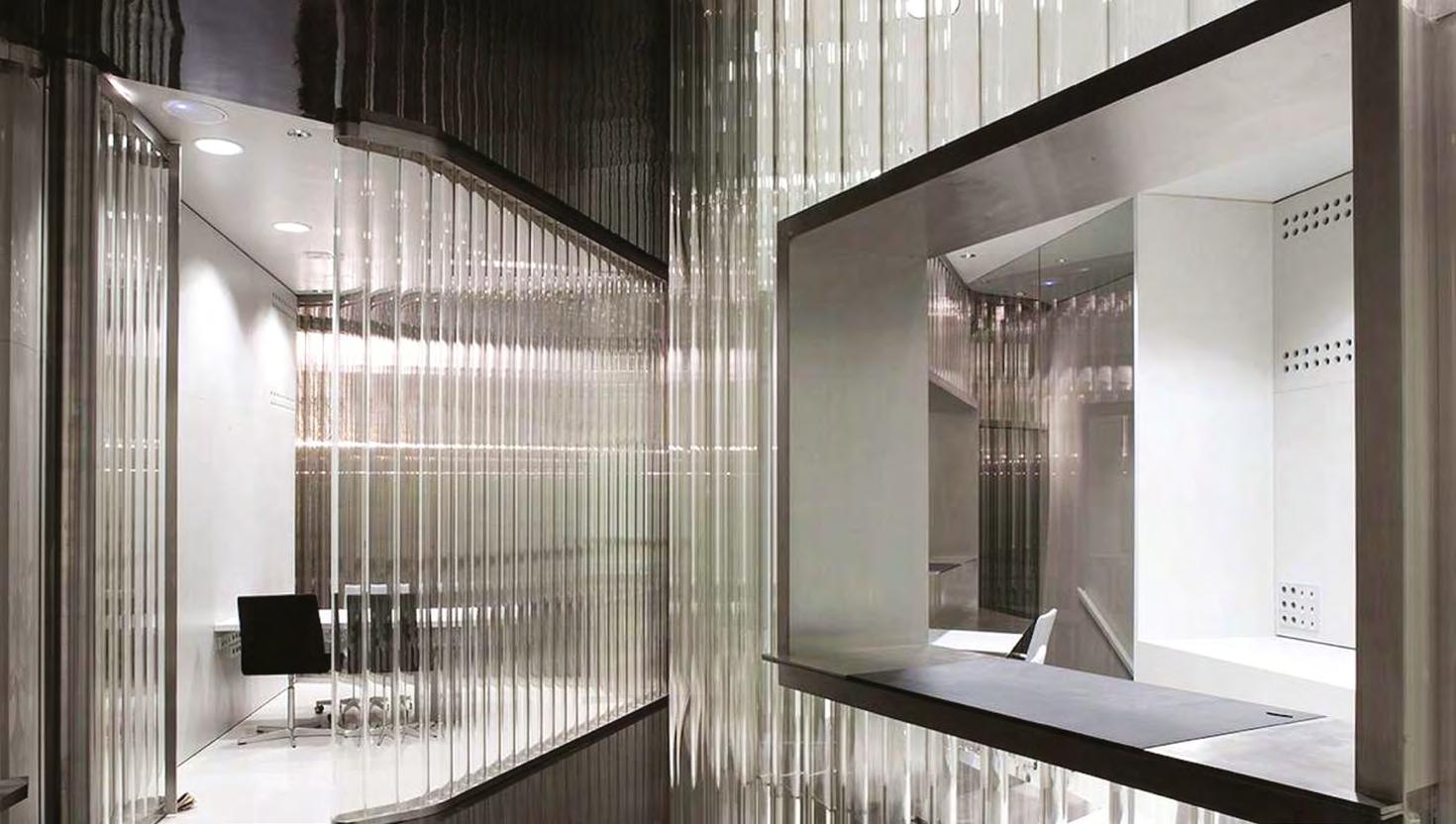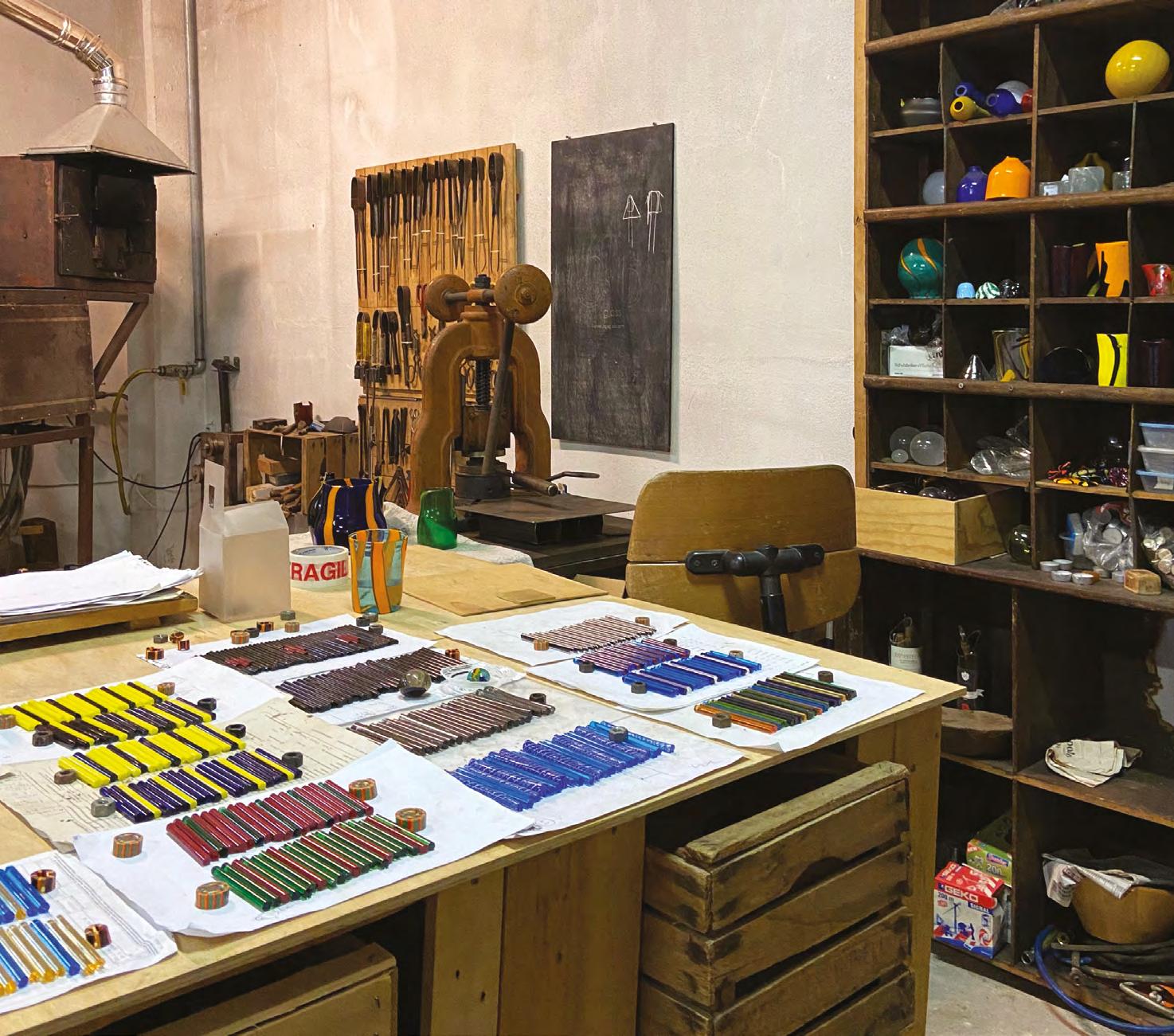
18 minute read
Fragile Business: Libbey-Owens-Ford and the impact of the 1970s energy crisis on the american glass industry
GIORGIO MARFELLAA
KEYWORDS: GLASS MANUFACTURING, OIL CRISIS, ARCHITECTURAL GLASS PRODUCTS
The energy crisis of the 1970s had devastating economic effects on the modern glass industry, yet it accelerated the development and distribution of more energyefficient architectural glass products. The case of the US manufacturing company Libbey-Owens-Ford illustrates the vital relationship of the glass industry with the global economics of energy and its business repercussions for the development of architectural products with better environmental performance.
A Faculty of Architecture, Building and Planning, University of Melbourne, Australia.
Introduction
Glass manufacturing is a technically complex and capital-intensive business. The science and know-how of glass are sophisticated and fascinating, making its history an ideal terrain for studying the interactions of architectural design with the economics of industrial production and the explanation of the processes of innovation with building materials.
Glass is also somewhat indispensable in our daily lives, and it is a very fuelintensive and energy-dependent material. Glass manufacturing has always had to rely on an extraordinary expenditure of limited resources, and glass products, especially those for architectural applications, are intimately linked to the environmental performance of human habitats.
The relationship of glass with energy has important implications for its historical development and calls in question the future of its manufacturing industry. There are pressing calls to reconsider how glass is used – and sometimes abused – in architecture and opening avenues for an academic renaissance of critical studies on glass in the built environment.
The history of glass in architecture has an authoritative scholarly precedent (McGrath and Frost, 1961), and there is a nascent interest in the historical relationship of its manufacturing developments with technological innovation and architectural design. Some recent scholarly examples have focused on the modern period, showing the socio-economic facets of new glass products and their important role in commercial and residential developments in America (Esperdy, 2008), or as an instrument of scientific experimentation in the hands of the European avant-garde (Urbano Gutierrez, 2013). These contributions offer alternative lines of thought to the more mainstream, and rather pessimistic views of architectural historiography, which tends to liquidate the critique on glass in modern architecture under pejorative assumptions or the stylistic label of the International Style.
The purpose of this paper it to emphasise the delicate nexus of the glass manufacturing industry with the economics of global energy consumption. The fragility of this nexus can be understood by studying the effects of the energy crisis of the 1970s and the ensuing inflationary economic repercussions that spread from that crisis on a global scale. The two Oil Crises of the 1970s, the first one in 1973 and the second in 1979, had major adverse effects on the global industrial economy (Yergin, 2012). For one of the biggest American industrial manufacturers of the twentieth Century in the world, glass maker Libbey-Owens-Ford (LOF), the effects were as severe as to cause rapid business decline, albeit by managing to avoid bankruptcy by being acquired by another large glass manufacturer.
Looking retrospectively at LOF’s annual reports to its shareholders from 1945 until the demise of the company in 1982, the fallacy of some US industrial corporate models that were pervasive in the second half of the
Century becomes apparent. The long-term fragility of business models that sought over-diversification at the expense of research and development is evident in the case of a glass company that was confronted by global changes sparked by an energy crisis. The case of LOF is significant for the history of modern glass manufacturing, and useful to derive insight and observations into the likely risks and challenges faced by all glass manufacturers in times of energy crisis and high inflation.
Libbey-Owens-Ford and the post WWII American glass industry
Libbey-Owens-Ford (LOF) was founded in 1930 by the merging of two major US glass companies located in Toledo, Ohio, a city with a long tradition of glass manufacturing due the local availability of sand and natural gas deposits (Floyd, 2015).
One side of the company, originated from the Libbey Glass company established in 1888 by Edward D. Libbey. Libbey subsequently incorporated the Mike Owens’ Bottle Machine, the company of the inventor of the first mechanical bottle blowing apparatus. In the 1910s, Libbey and Owens entered the flat sheet glass manufacturing business after the acquisition of the Colburn’s continuous horizontally drawn glass production method, a precursor of the modern manufacturing method that would be perfected years later by Pilkington with the float glass method.
The other side of the company is linked to the glass manufacturing tradition of Edward Ford, one of the original founders of the Pittsburgh Plate Glass Company (PPG). Ford left PPG in 1896 to setup company in Rossford, near Toledo. By the 1920s, the Edward Ford Plate Glass Company was one of the principal producers of polished plate glass in America and in 1930, in order to meet the extraordinary expenditures required for implementing polished plate glass production, the two companies of Ford and Libbey-Owens joined forces becoming the Libbey-Owens-Ford Glass Company.
LOF grew rapidly, becoming with their Pennsylvanian rival, PPG, one of the two largest producers of glass in America, and a major producer in the world. The company’s growth was aided by the sudden expansion of the American automobile industry, and the company’s ability to strike an exclusive deal of supply of automotive glass with General Motors. Equally important for LOF was an intelligent strategy of acquisition of patents and investments in research development, which put the company at the forefront of product innovations, such as Thermopane, the first commercialized insulated glass units (Leslie, 2018). LOF’s capacity to innovate with commercially viable products was strengthened by the large size of the company, and the marketing ability and pervasiveness of a nationwide network of distributors. The innovative capacity and culture of LOF became a valuable national resource of the industrial war effort during WWII, when the company converted the best part

Fig. 01 Johnson and Burgee, Investors Diversified Services (IDS), Minneapolis, Minnesota, 1973 (left). Maurice Allen Jr, Detroit & Norther Savings and Loan Building, Hancock, Michigan, 1973 (right). Libbey-Owens-Ford Archives, M. Ward Canaday Center, University of Toledo, Ohio
of its operations to the production of components for military applications.
After WWII, the massive expansion of the US car industry, fueled a growing demand for car windshields of a larger size, helping glass manufacturers in the reconversion of their production lines from military to civil purpose. Larger car windshields appealed the growing market of the American 2-family car and were made technically possible by advancements with laminated glass production, which responded to higher safety standards, and skills in the making of bent glass developed at LOF during WWII for the manufacturing of military aircraft canopies (Marfella, 2019).
By the end of the 1950s, the US domestic demand of glass had created a duopoly dominated by PPG and LOF with the Toledo’s company holding a competitive advantage as the largest automotive supplier of the country.
LOF’s economic prosperity of the post-WWII period began to wither in the early 1960s, when the long-term contract for the exclusive supply to General Motors expired. While the company continued to be profitable, earnings alternated between negative and positive results. Moreover, LOF began facing increasing competition from foreign imports from Europe and Japan. Pressure from foreign supplies was in part due to ‘dumping’ of lower quality glass products in the US domestic market, but ultimately LOF began losing competitive advantage due to the international liberalization of US markets, against which the company had lobbied strongly against tariff elimination
policies implemented by the Kennedy’s administration (LOF, 1961; LOF, 1962).
Making matters worse, American glass manufacturers were handicapped by the strategic advantage gained by British manufacturer Pilkington with the successful implementation of the float glass method of production. Float glass manufacturing, by eliminating the costly and laborious process of mechanical polishing needed to obtain flat glass surfaces, caused the large-scale massproducing manufacturing plants of the American glass makers to become superseded. To avert the risk of being priced out by the more efficient float method, both PPG and LOF took immediate steps to become licensee of the Pilkington’s patent, investing extraordinarily in the conversion or expansion of their plants to adopt the new technology.
To counteract these foreign competitive pressures, LOF began a strategy of foreign investments. The most ambitious of these was in 1962 when LOF acquired one third ownership with two Italian companies in the establishment of Societá Italiana Vetro (SIV). Defying LOF’s hopes of breaking through the European market by feeding the Italian industrial miracle, SIV entered the full production stage in 1966, but struggled to become profitable. On 12 December 1967, an unprecedentedly heavy storm hit the Adriatic Coast in Italy, causing severe damage to SIV facilities. The event forced LOF to ship substantial quantities of plate glass to Italy to meet automotive order commitments of their co-owned subsidiary. In 1970 despite registering signs of growth with rising volumes of sales in the European car market, SIV was still an investment at loss for the American partner, and a year later LOF sold its share of the Italian company, abandoning thereon plans to disrupt the European market.
Despite recording substantial increases in sales, by the end of the 1960s, LOF’s glass share in the domestic market had reached the plateau of a ‘stabletech’ company (Chandler, 1994). The company was a reputable, successful, and profitable enterprise of the American manufacturing industry. Yet, in the eyes of a new generation of executives that took hold of the company in 1967, LOF did not provide the return on investment that they thought it should.
At the root of the relatively sluggish financial performance of the company, there was the capital-intensive nature of the glass industry. In the 1960s, US glass industry wages were estimated at 26.5% of the total value of gross sales, as opposed to the 15% share estimated for manufacturing workers as a whole. In 1968, glass operations at LOF required $27,000 of investment per employee, compared to the average $14,000 per employee of the 500 US largest industrial companies of the time (LOF, 1968). The capital-intensive crunch imposed by high labour costs, could be alleviated by the introduction of float lines, but these required the significant one-off costs imposed by the conversion of manufacturing processes from the obsolete sheet plate production.
In the effort to seek higher returns for their shareholders, LOF committed to a major program of acquisitions with the scope of diversifying from the
glass business. In the process, the new leadership revamped substantially the organisation setting new corporate objectives. LOF abandoned the productbased development and distribution model of their sales team and set to adopt a so-called ‘market-oriented’ structure. This meant an overhaul of the existing sales force with the objective of specializing distributions by markets, and not by product followed, with success, by the company in the past. The marketing approach put at the forefront strategies to achieve market penetration and better price points, creating sales specialists and managers who were asked to focus and report ‘exclusively’ on their markets.
Significantly, in 1968, the company decided to remove the word ‘Glass’ from the LOF shield and logo. From therein LOF embarked in an aggressive strategy of corporate diversification, starting with the acquisition of Aeroquip, a rapidly growing supplier of fluid power components for the automotive and aeronautical industry.
The effects of the 1970s energy crisis on LOF Glass
In spite of the corporate remodeling and changes of strategies of the late 1960s, the following decade did not open in an auspicial way for LOF’s shareholders. In 1970, a nationwide recession and long periods of industrial unrest led to poor sales and earnings. LOF’s executives had to cut personnel and dividends and recur to a significant increase in bank borrowings (LOF, 1970). After a short-lived rebound, the destabilizing consequences caused by the First Oil Crisis began to unfold in 1973. As inflation began to rise due to higher petrol prices, LOF felt the brunt of depreciation on major investments in manufacturing equipment that were necessary for the implementation of the float process. The financial impact was registered above all in 1974, when LOF recorded lower sales in all its sectors and profits slumped by 50% from the previous year.
In the mid-1970s, the economic situation of LOF improved, but only temporarily. Sales passed the 1-billion-dollar threshold in 1978, but alternating profit results, and a declining, or at best fluctuating performance of the glass division lingered on. From time to time, the scarce profitability of glass making depended on external occasional factors, such as losses of productivity due to cold-weather or industrial unrest. Other factors were an inevitable part of the business of large-scale glass manufacturing. Such was the case of heavy start-up costs required for setting up construction to satisfy new automotive models and decreasing levels of demand due to 1970s car design trends that preferred smaller car sizes and windshield areas.
However, LOF’s economies of scale, and the benefits of advanced research and development efforts undertaken in the early 1960s, allowed the company to mitigate the adverse effects of the crisis. The successful release of a new suite of glass products able to provide higher environmental performance, namely reflective glass, became critical to allow economic survival.
Since the end of WWII, LOF had started research and development with vacuum-applied metallic coating on glass, converting ideas developed for hightech military products for optical and electronic applications into experiments for commercial products. In 1964, LOF’s product engineering team announced the reaching of a ‘breakthrough’ in the glass filming field, which consisted of the development of a system of reflective coating utilizing vapor deposition, pyrolithic decomposition and evaporation of metal deposits (LOF, 1964).
Construction of a pilot plant to perfect the technology commenced soon after, with work and investments flowing into the technology, and preparing for the establishment of a continuous production line for reflective glass. The technology was bound to render obsolete the time-consuming and less energy-efficient processes of tinted heat-absorbing glass. These advances led to the release of the first reflective product line, Vari-Tran coated glass in 1967, which LOF made available also for use in conjunction with their insulated glass product line, Thermopane.
In 1971, Vari-Tran was the leading and most innovative glass product produced by LOF. The reflective coating could be applied to sheets of glass as large as 10x12 feet, using a semi-continuous deposition of metallic coatings. Glass was fed through a series of vacuum chambers used to lower the boiling point of the metals applied to the surface of glass. The resulting film was extremely thin, allowing visible light transmittance while reflecting a considerable amount of solar energy. LOF’s reflective glass product lines quickly expanded with more than fifty versions of the product available, combining reflective coatings with clear glass or heat-absorbing tinted glass in grey, blue, bronze, silver, or gold colors (LOF, 1971).
The mirror-like product soon began to attract interest among American architects. The Adoption of reflective glass was encouraged also by legislative changes, like the Model Code 90-75 prepared by American Society of Heating, Refrigeration and Air Conditioning Engineers (ASHRAE). The first building typology to exploit the benefits of reflective glass were especially office buildings, where the economics of building operations married conveniently with the mirror-like appeal of rising post-modern aesthetics. Among the earliest examples of the new architectural genre, LOS supplied glass to small office towers, like the Detroit Northern Savings Banks in Hancock, Michigan, and notorious city landmarks alike, like the Investors Diversified Services (IDS) Tower in Minneapolis and the Pennzoil Center in Houston.
LOF had managed to weather the storm of the First Oil Crisis in virtue of the successful marketing of a product innovation, reflective glass, that responded timely to the energy conservation needs of the times. But the company could not survive the pressures induced by the sudden oncoming of a second crisis. In 1979, a Second Oil Crisis created further adverse market conditions, turning LOF’s glass operations, for the first time in its history, into an unprofitable business. In 1980, the glass division incurred a $6.2 million
loss due to the simultaneous fall of demand in the automotive and residential markets. In the following year, the US automotive and housing construction markets hit their 20-year and 35-year lows, respectively, defying LOF’s hopes of recovery in the glass market (LOF, 1980).
LOF Glass, as a result, continued to decline sharply, losing $14 million in one year. The performance of the glass division of the business was in stark contrast with the profitable subsidiary divisions of fluid power equipment and plastics that LOF incorporated following financial diversification strategies (LOF, 1981).
In 1983 LOF issued the last annual report to its shareholders. The report described the previous year as one of change, announcing the group intent to become a ‘stronger marketing company’ (LOF, 1982). In December 1982, Pilkington had purchased a third of LOF’s equity in Wall Street. The company announced a ‘technical assistance program’ with Pilkington, accepting de facto to turn its Glass Division into a subsidiary of the British glass manufacturer. Cuts to the glass department, and the profitable earnings of LOF’s subsidiaries active in other sectors, had minimized the damage for shareholders, attracting a most reputable rescuing partner. Financial bankruptcy was averted by corporate diversification, but the American industry had lost one of its most important and globally influential glass companies.
Discussion
The case of Libbey-Owens-Ford illustrates the far-reaching effects on the business of glass making that can be triggered by inflation and global disruptions to the markets of energy supply. The dynamics that led to LOF’s demise are significantly instructive because they show the vulnerability to energy-related fluctuations of one of the largest glass producers of the twentieth Century. The vicissitudes of a single glass manufacturer should not induce to apply a general parallel with the history of the modern glass industry as a whole. Nevertheless, LOF’s scale and global interconnectedness allow some provisional observations subject to further scrutiny and broadening of the investigation.
The commercial success of glass products depends on the vital imperative to embark on continuous research and development projects with a long-term horizon. Continuous investments in innovation are considerable undertakings for companies engaged in a high-risk industry with capital-intensive operations. But for leading glass manufacturers, the commitment to innovation is an imperative, not optional. The fruits of research and development can be critical to offset periods of crisis, like reflective glass did for LOF, whilst detracting resources and efforts from research and development can quickly lead to economic decline and extinction.
Continuous product development is critical for gaining or keeping a competitive advantage in the two most important markets of glass,
the automotive and construction industries. Glass is indispensable for manufacturing vehicles and constructing buildings. Nevertheless, ongoing glass product developments and innovations maintain a fundamental role in these two industries. The absence of alternative materials available to substitute glass does not override the need for constant technological advancements. The performance of glass products informs critical design decisions related to human safety and energy consumption. When economic and social demands on buildings’ operation and life cycle become more pressing, as they were in the 1970s and are in the present, the commercial success, or survival, of glass products is strongly correlated to the innovative imperative of demonstrating growing performance outcomes.
Finally, corporate diversification strategies, like those implemented by US industrial manufacturers in the second half of the twentieth Century, can be a double-edged sword. On the one hand, when strategies succeed, diversification can offset potential losses arising from risks inherent to the complex nature


Fig. 02 LOF profits, 1945-1982 ($US million adjusted for inflation, 1982 = 100). Fig. 03 LOF net sales, 1945-1982 ($US million adjusted for inflation, 1982 = 100).
of glassmaking. On the other hand, when diversification is too widespread in a horizontal sense, reaching out to sectors unrelated to glass, and, even worse, when diversification is achieved per se as a mere financial strategy for corporate survival, then diversification can bring the adverse effects of waning know-how and diverting resources from the strategic imperative to innovate.
Conclusion
The energy crisis, as a paradox, gave LOF market growth opportunities with ‘high performance’ glass products. The company had already invested significant efforts prior to the Oil crisis to promote economic benefits for operating costs of air conditioning. The reflective skyscraper was the most notable building type with glass supplied by LOF in the 1970s, as the energy crisis created higher demand for high performance glass, which the reflective coatings applied on float glass products could provide outperforming by far glass products of the previous generation.
Glassmaking is a capital and energy-intensive endeavor, ergo, a potentially fragile business. Like the fragility of the material can be overcome by knowhow with tempering or chemical strengthening, so its industry can acquire strength and resilience through innovation. Economic resilience depends however on the capacity of producers of glass to never lose sight of the specific know-how of their industry and to invest with a long-term horizon by continuously striving to improve the efficiency of its manufacturing methods and the environmental performance of products.
References
Chandler, A.D. (1994). The competitive performance of U.S. industrial enterprises since the Second World War. The Business History Review, n. 68 (1). The President and Fellows of Harvard College, pp. 1-72. Esperdy, G. (2008). Modernizing Main Street: Architecture and Consumer Culture in the New Deal. Chicago: University of Chicago. Floyd, B. (2015). The Glass City: Toledo and the Industry that Built It. Ann Arbor: University of Michigan Press. Leslie, T. (2018). “Insulation with Vision”: the development of insulated glazing, 1930-1980. APT Bulletin: the Journal of Preservation Technology, n. 49 (5). Association for Preservation Technology International (APT), pp. 23-32. LOF (Libbey-Owens-Ford). Libbey-Owens-Ford Annual Reports (1916-1982). Libbey-Owens-Ford Glass Company Archives. Ward M. Canaday Center for Special Collections. University of Toledo, Ohio. Marfella, G. (2019). Behind the shield: glass as vehicle of technology transfer from the automotive industry to the International Style. In Edquist, H., Stitt, H. (ed.), Autopia: the Car and the Modern City. Proceedings of the 3rd Annual Conference of Automotive Historians Australia, pp. 1-18. McGrath, R., Frost, A. C. (1961). Glass in Architecture and Decoration. London: The architectural Press. Urbano Gutiérrez, R. (2013). Le pan de verre scientifique: Le Corbusier and the Saint-Gobain Glass Laboratory experiments (1931-32). Arq-architectural Research Quarterly, n. 17 (1). Cambridge University Press, pp. 63-72. Yergin, D. (2012). The Prize: the Epic Quest for Oil, Money and Power. New York-London-Toronto-Sydney: Free Press.

